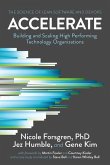Statistical Methods is a two-volume textbook, currently in its 6th Edition. In addition to being well-written and user friendly, it is very comprehensive. The text includes numerous examples from many disciplines that illustrate applications of statistics. The examples and practice problems have been tested and verified for accuracy via exposure to over 8000 students and professionals. James R. Beatty has a PhD in both statistics and in psychology and has taught statistics and the applications of statistics in business schools for many years. He has a strong and varied background as a consultant in business, psychology, and statistics, both nationally and internationally. He has served numerous times on the Board of Examiners for the Malcolm Baldrige National Quality Award, has been a Judge for the President's Quality Award, a Senior Examiner for the California Quality Awards, and a Judge for the California Quality Awards. These positions and his consulting and research experiences are integrated into the textbook, with an emphasis on the application of the Plan-Do-Check-Act process for problem-solving and decision-making.Text is well-structured, with guidelines and tools that help the user understand the inter-relationships among the topics presented. For example, there are extensive interrelated flowcharts in Chapter 8 of Volume 1 that help the user determine appropriate statistical tools for most applications. The user learns what questions to ask before determining what test is appropriate, much like a consultant must do. Portions of these flowcharts are then used at the onset of all of the subsequent chapters, further providing linkage among topics and across chapters.Appendix F of Volume 2 also includes these same flowcharts so the user will have access to them in both volumes.Each chapter includes three types of problems, including written problems, multiple choice problems, and quick quizzes. The answers to all problems are included in Appendix A of Volume 2. Since the problems and related answers have been tested with thousands of students, the students and the instructor can be confident of accuracy. The book includes perhaps the most comprehensive set of tables available on the market. For example, the standard normal distribution is extensive, the t-table and F-table include more degrees of freedom and probability levels than most books, and the binomial and Poisson tables are thorough. There is even a complete table of significant correlation coefficients.Other features of the book include a real world data base available for use by students, software that can be integrated with the book for many statistical procedures, and numerous other applications. One of the most useful features of the book is Appendix H of Volume 2. Business faculty and others familiar with various Hewlett-Packard calculators such as the HP-19-B-II and the HP-17-B-II will find this appendix extremely useful. It gives step-by-step instructions for setting up these calculators for statistical applications and includes statistical equations that can be easily inserted into the HP equation solver to save students and instructors tedious work and considerable time. Thus, the instructor will have more class time to focus on the concepts, applications, and interpretations of results, knowing the students can easily perform most computations through the equation solver.For example, the appendix includes an equation for calculating various probability levels for the standard normal distribution, given the z-value and the number of tails desired; conversely, given the desired probability level, the equation will automatically determine the z-value. As another example, the appendix includes an equation for the binomial distribution, allowing quick calculations of both exact and cumulative binomial probabilities. Other equations include the Poisson distribution, the hypergeometric distribution, measures of skewness and kurtosis, the geometric mean, the harmonic mean, various standard error terms, and numerous equations for bivariate and multiple regression. All equations have been extensively tested. The text also presents numerous computer printouts from various software packages, as well as from Excel, to support the learning process.Professor Beatty has won many teaching awards, and much of the students' course satisfaction can be attributed to his textbook. He is extremely student-oriented, with an emphasis on the teaching/learning model, as reflected in his book and as supported by student comments. Here are a few representative student comments about the book: The book was very relevant and very practical. The flowchart methodology and scenarios are ideal for any business person's professional tool kit.Professor Beatty clearly understands the material. The book is very structured and straightforward, which made learning easier.The book is outstanding. It has extensive examples and is very interesting as well as instructive.The material was very interesting, and the book includes many practical applications which helped us tobetter appreciate statistics.The knowledge Professor Beatty articulates to the class through his book is obvious. I truly enjoy listening to experts talk about their specialties. Jim's class, although very challenging, has changed my outlook on statistical analysis. As a professional and as an executive, the textbook will help me as I continue to grow in my career.The 'real-world' examples provided in the text helped me understand the applications of statistical methodology.

